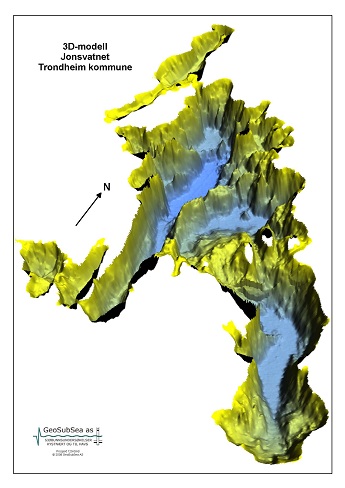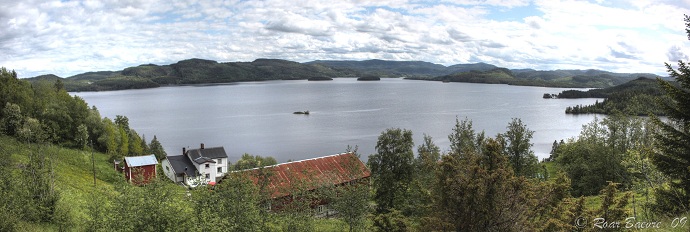Can polluted water travel upstream?
How safe is the drinking water source for almost 300 000 inhabitants in Middle Norway? DHI investigates the peculiar hydrodynamics of Lake Jonsvatnet and maps the pollution threat from human activities.
Heavy rain falls and a lack of efficient treatment barriers were responsible for the pollution. Two types of tiny parasites made their way into the drinking water of the Norwegian city of Bergen. Some 1500 people came down with diarrhoea, one even died. Incidents like the one in Bergen have raised the awareness of Norway’s inhabitants and communities to the vulnerability of their drinking water supplies, mainly stemming from surface waters.
Trondheim, Norway’s third largest town, obtains its drinking water almost entirely from one lake: Jonsvatnet, covering 14 km2 with a maximum depth of 100 meters. Even though some emergency backups are available, this concentration on a single source makes Trondheim highly vulnerable to pollution; especially, as the water in Jonsvatnet sometimes behaves rather weird.
Jonsvatnet consists of a major basin upstream, supplying Trondheim’s drinking water, and a smaller basin downstream. The latter is affected by human activities from settlements and agriculture. The two basins are separated by a shallow threshold. However, measurements have shown that the more polluted water from the smaller basin periodically travels upstream: it flows over the threshold backwards into the larger basin, endangering its pristine water.
 How is that possible? DHI offered to investigate the case. They set up a full hydrodynamic model of the basins, revealing the flow of water, its circulation and temperature stratification. Subsequently, the hydrodynamic model was coupled to an ecological model. That allowed DHI to investigate the movement of the potentially hazardous bacterium Escherichia coli through the lakes waters.
How is that possible? DHI offered to investigate the case. They set up a full hydrodynamic model of the basins, revealing the flow of water, its circulation and temperature stratification. Subsequently, the hydrodynamic model was coupled to an ecological model. That allowed DHI to investigate the movement of the potentially hazardous bacterium Escherichia coli through the lakes waters.
The model soon revealed the activities of the evildoer. The situation is especially interesting in autumn. Then, the water starts circulating earlier in the minor than in the bigger basin, mixing warm surface water with cold water from greater depths. This mixed water is colder than the surface water in the still-stratified larger basin. As a result, it “sneaks” over the threshold into the major basin. Potentially polluted water thereby makes its way upstream. When finally the major basin circulates, this water is transported to the drinking water intake, endangering Trondheim’s inhabitants.
On top of this effect, the short daylight length and low temperature of late autumn at these latitudes prevents the decay of coliform bacteria. As a consequence, the raw water quality can remain compromised even a long time after a pollution event.
With this knowledge, Trondheim municipality is ready to face and fight the problem. How often does this dangerous situation occur? Which remedial measures should be taken? Should we build a dam between the two basins? One way or the other, Trondheim’s inhabitants can surely rest a bit easier once the system has been implemented.
